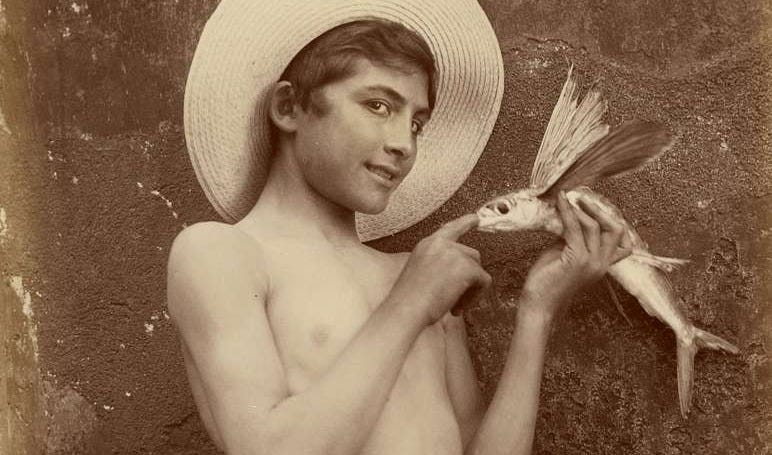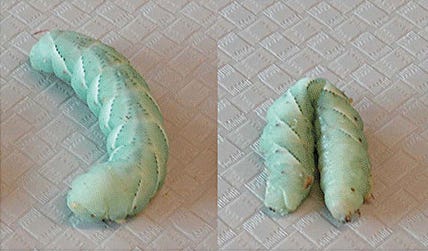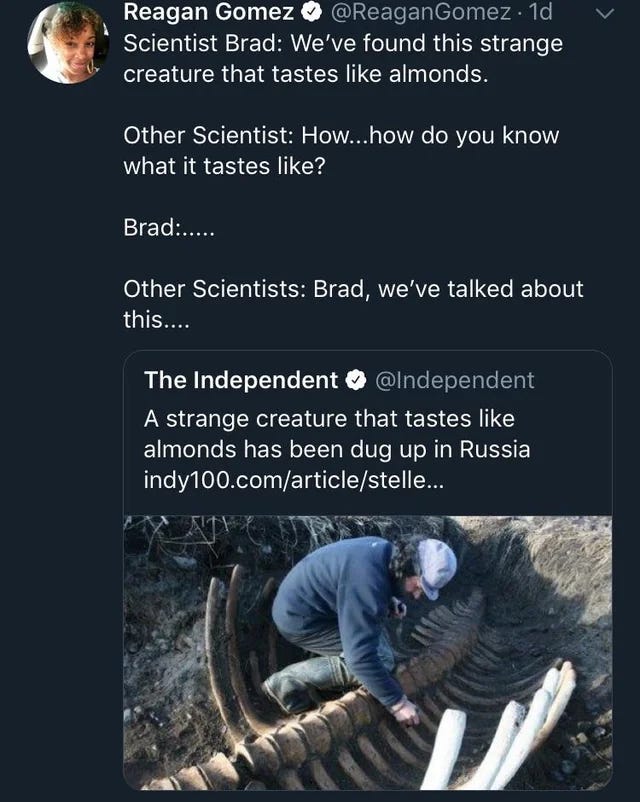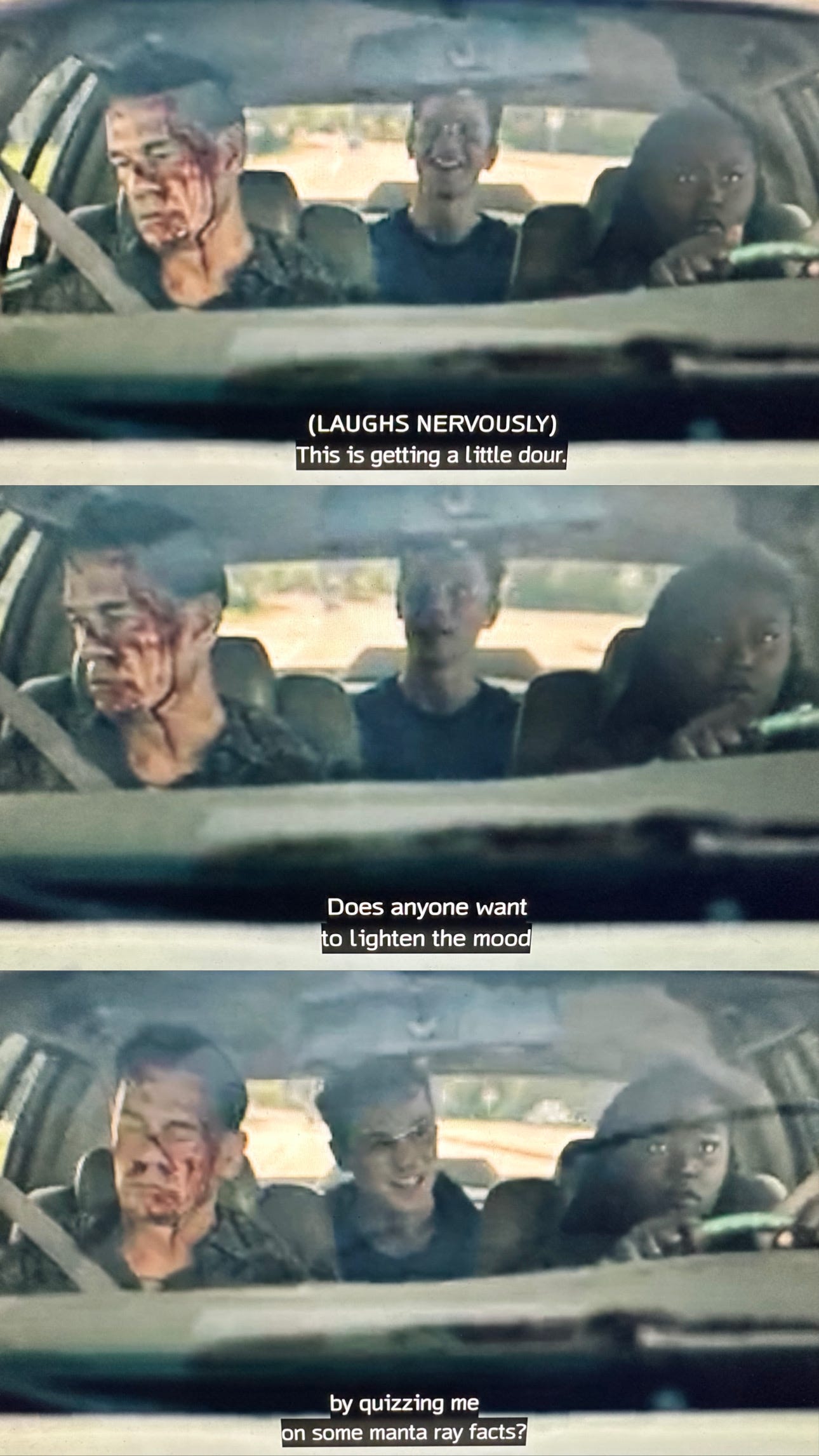
news flash: we now think that the genes for our fingers evolved from the genes for fish cloaca1
“The common feature between the cloaca and the digits is that they represent terminal parts. Sometimes they are the end of tubes in the digestive system, sometimes the end of feet and hands, i.e. digits. Therefore, both mark the end of something” - Aurélie Hintermann (emphasis mine)
House windows kill 2,500x more birds than wind turbines. - paperfly

“The bacterium Photorhabdus luminescens2… pumps insect larvae full of the lethal ‘Makes caterpillars floppy 1’ (Mcf1) toxin, leading them to first become droopy and then dead.”
it does what now.
“Mcf causes shedding of the insect midgut epithelium and destructive blebbing3 of haemocytes suggesting it may trigger apoptosis.”
who even names these things?
there’s also a Sonic Hedgehog gene (named by Robert Riddle) - “Sonic hedgehog, SHH, is required for patterning the limb. The array of skeletal elements that compose the hands and feet, and the ordered arrangement of these bones to form the pattern of fingers and toes are dependent on SHH.”
this, at least I get - there are a bunch of hedgehog genes, so named because “[t]he hh loss of function mutant phenotype causes the embryos to be covered with denticles, i.e. small pointy projections resembling the spikes of a hedgehog.”
ooh and there’s INDY, a gene that extends fruit fly lifespans and is named for Monty Python’s “I’m not dead (yet)”
…why yes, I did just come across wikipedia’s list of unusual biological names, why do you ask
Peach pits were used to make gas masks in WW1
this is real.
yup. Steller's sea cow's blubber was described as tasting like almond oil - y’know, before it was hunted to extinction. (or maybe the sea urchins did it (while buttling, with the candlestick in the library, presumably))
yeah ok so I’m basically Vigilante from Peacemaker here
yes please!
since we were just talking about cloacas, how about this one - “Mantas can remove internal parasites by sticking their intestines up to 30 cm (12 in) out of their cloaca and squeezing them out, often while defecating.”
or here’s a fun baby tidbit - manta ray embryos don’t have a placenta or umbilical cord, so how do they get oxygen? aha, “the manta ray embryo obtains oxygen by buccal-pumping of the uterine fluid, in the same way that the embryos of egg-laying species obtain oxygen from the water in the egg case.”
(Buccal pumping is breathing by moving one’s cheeks (as opposed to using a diaphragm like us, or shrugging like turtles). This is what frogs do, too.)
Oh, and they at least sort-of pass the mirror test.
short stories I recently read and enjoyed
perfect sentences (and snippets) (vaguely profound edition)
“And Nothing is very strong: strong enough to steal away a man’s best years not in sweet sins but in a dreary flickering of the mind over it knows not what and knows not why, in the gratification of curiosities so feeble that the man is only half aware of them, in drumming of fingers and kicking of heels, in whistling tunes that he does not like, or in the long, dim labyrinth of reveries that have not even lust or ambition to give them a relish, but which, once chance association has started them, the creature is too weak and fuddled to shake off.” - CS Lewis, The Screwtape Letters (via)
"the maggot gnaws the cabbage, yet dies first" - Tolstoy, W&P
“Lay me down like a stone, O God, and raise me up like a loaf” - Tolstoy, W&P
“First chlamydia vaccine approval offers hope for at-risk koalas” - chariot pulled by cassowaries
“Adding hair also helps to prevent possible reptile confusion.” - Lewis Rossignol
“He did not run from being defeated into the refuge of not doing that in which he had been defeated.” - Xenophon (via)
list of books I wish Mary Roach had written instead
…every other work of non-fiction out there, really
see "Co-option of an ancestral cloacal regulatory landscape during digit evolution" (2025) by Aurélie Hintermann et al
which indeed, happens to be luminescent



